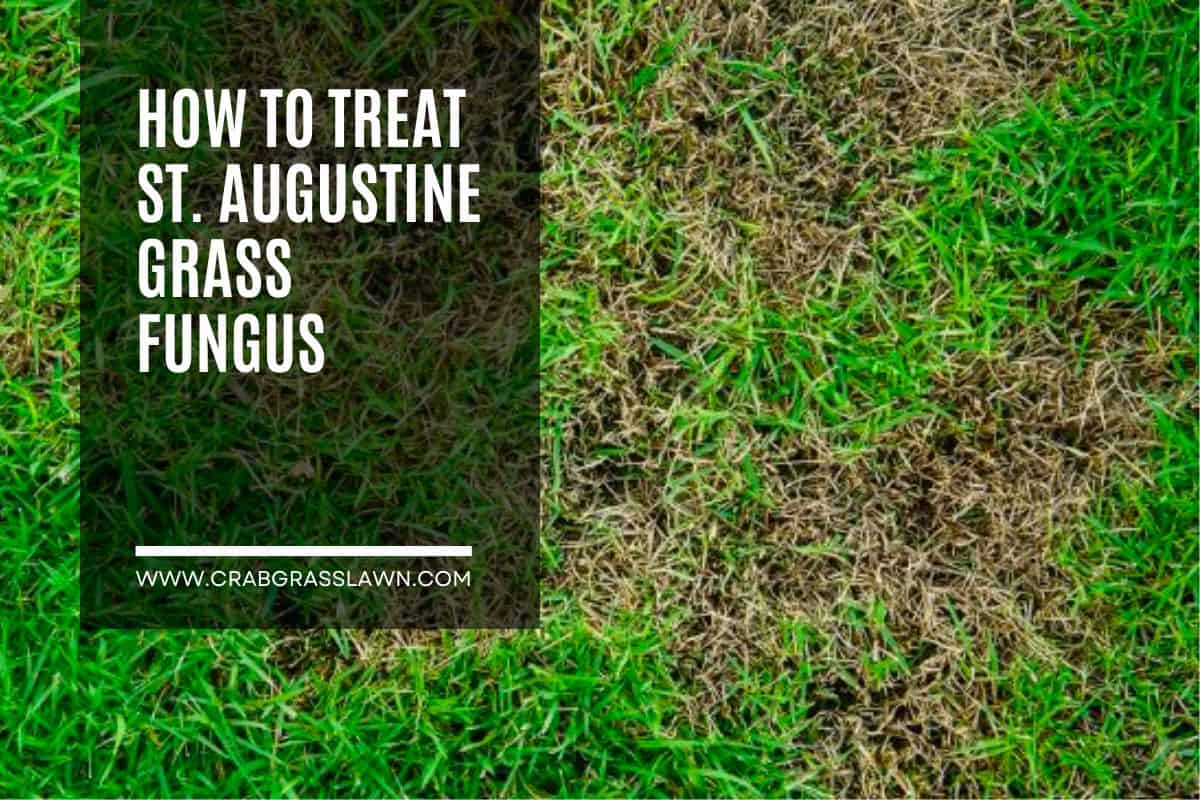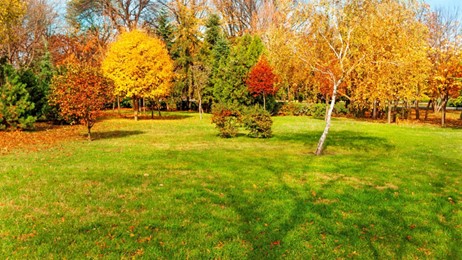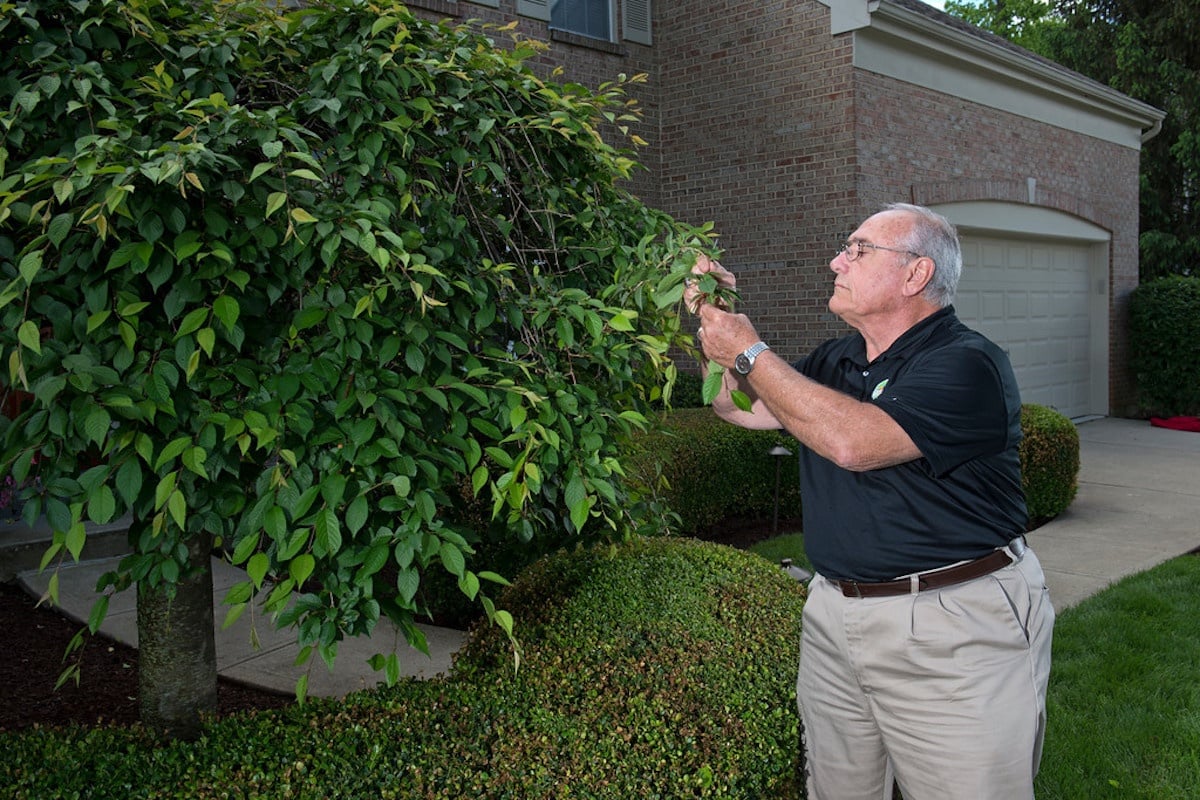
My St. Augustine lawn showed lush growth until a few days ago. I have noticed brown spots appearing all over my lawn, which I suspect are signs of a fungal disease, sometimes called brown spot fungus.
If your St. Augustine grass is affected by leaf spot or any other common type of fungus like total rot, there is no need to break a sweat just yet because I have listed several tried and tested ways to say goodbye to grass fungus on your lawn. .
Fast answer
The steps I take to treat St. Augustine’s Wort Fungus and revive my lawn include:
- smart irrigation
- fungicide treatment
- call a professional
You will discover more details on how to perform these tasks effectively below.
Affiliate Disclaimer: As an Amazon Associate and participant in various other affiliate programs, I earn a small commission at no additional cost to you from qualifying purchases.
How to Treat Grass Fungus on St. Augustine Lawn?
Now you’re probably thinking that applying a fungicide from Home Depot or your local garden center under favorable conditions is the best way to treat St. Augustine grass fungus, and while this is partially true, it will fix the underlying problem causing the fungus. fungus. To appear.
That said, here’s what you should do before applying any fungicide application:
- Proper irrigation – St. Augustine grass prefers 1 to 1.5 inches of water per week and infrequent, deep watering. The best time to water St. Augustine lawn is early in the morning, giving it enough time to dry by evening. But remember, no amount of fungicide will control any lawn fungus that results from poor watering practices.
- Improving Drainage – Ensure good soil drainage to prevent waterlogging, which can create favorable conditions for fungal growth. There are many ways lawn owners can address drainage problems to prevent fungal infections and other lawn problems, such as improving soil structure, leveling low spots, aerating the soil, and installing drainage pipes.
- Fertilization – Follow a balanced fertilization program based on soil test recommendations. Avoid excessive applications of nitrogen fertilizers, as excessive fertilization can increase the chances of fungal diseases.
- Cutting practices – Set your mower at the recommended height for St. Augustine grass, which generally ranges from 2.5 to 4 inches. The most important thing is to keep your lawn mower blades sharp to ensure clean cuts and minimize stress on the grass. Avoid removing more than one-third of the blade of grass in a single mowing session.
- Fungicide applications – The good news is that there are countless different fungicides available to cure the brown areas of your lawn after, of course, applying proper cultural practices. But before using any type of fungicide, it is important to determine the type of fungus we are dealing with. Once you have discovered what fungus has affected your lawn, use an appropriate fungicide and apply it according to the manufacturer’s instructions on the label. These are three of my favorite options in the lawn fungicide space.
Better Grass Fungus Herbicide for St. Augustine Lawns
1. Bioadvanced Lawn Fungus Control
He Bioadvanced Lawn Fungus Control It comes with a bug zapper so you can tackle two problems at once. This insecticide can kill larvae, ants, and ticks and may alleviate stink bug damage to your lawn. After application, the fungicide provides protection for 30 days and is not washed away during rainy weather.
2. Southern Ag Liquid Copper Fungicide
Another success in the lawn fungicide segment, the Southern Ag Liquid Copper Fungicide It can control lawn diseases caused by bacteria and fungi. It can even control moss and algae and is easy to use with hose-end sprayers.
3. Spectracide Immunox Multi-Purpose Fungicide Spray
With the Spectracide Immunox Multi-Purpose Spray, you will get protection against both diseases and pests for your lawn. This multipurpose formula cures and prevents all major diseases and must be mixed with water before application. It cannot be washed with rain once the spray is dry.
What causes St. Augustine grass fungus?

There are several causes for the appearance of fungi in the grass of San Agustín, among which are:
- Overwatering the lawn causes excess moisture – Stagnant water from overwatering can promote fungal growth in lawns, especially in early or late spring.
- temperature change – You will usually notice fungus on the grass in the spring season due to all the temperature fluctuations. While spring is a season of good growth and flowering, it can also be a good time for lawn fungi to call your lawn home.
- Poor air circulation – Insufficient air circulation around the blades of grass can contribute to the development of fungal diseases. This is more likely to occur in densely packed lawns, where air movement is restricted.
- Improper cut – Mowing the grass too short or using dull blades can stress the grass and make it more susceptible to fungal infections. You should always try to cut at the appropriate height for your type of grass and with sharp blades.
- Poor soil health – Unhealthy or unbalanced soil can weaken your lawn, making it more susceptible to disease. Regular soil testing and proper fertilization can help maintain optimal soil health.
- Fungal spores from nearby areas – Fungal spores can be carried by wind, animals, or equipment from nearby infected areas. Once introduced into the lawn, these spores can establish themselves and cause an infection. Follow this guide to Assess and address compacted soil in your garden..
Common Types of St. Augustine’s Wort Fungi
While several different types of fungi can affect lawns, the most common types of fungi you are sure to find in your St. Augustine lawn include:
- Brown spot disease (Rhizoctonia solani) – Brown spot is one of the most common fungal diseases affecting St. Augustine grass. It usually appears as brown circles, sometimes irregular patches of brown spots or tan grass with a darker border. The affected areas of small and large patches can range from a few centimeters to several feet in diameter in severe cases. Brown spot is usually more common during periods of high humidity and warm temperatures.
- Gray leaf spot (Pyricularia grisea) – Gray leaf spot is characterized by small grayish lesions with darker edges on the leaf blade. As the disease progresses, the lesions can fuse and cause widespread damage. This fungus is favored by warm, humid conditions, and tends to be more common in lawns with poor air circulation.
- Radical root rot (Gaeumannomyces graminis var. graminis) – Total root rot is a common disease that affects the roots and runners of St. Augustine grass, causing yellowing, wilting, and thinning of the grass. Infected roots blacken and rot. This disease is often associated with poor drainage and acidic soil conditions and can affect your lawn in early or late fall or any time in between.
- Large patch (Rhizoctonia solani) – Large spot, also known as brown spot, appears as large, irregular spots of discolored grass, ranging from yellow to brown, or dead spots. Large spots are more common during fall and spring, when temperatures are colder.
- Fairy Ring (Various Mushrooms) – Fairy ring is caused by different species of fungi forming visible rings or arches of dark green grass. The outer edges of the ring may have fungus or buns. This fungus does not directly damage the grass, but it can alter the aesthetic appearance of the grass. Learn more about the fairy ring mushroom.

Before you leave…
If you are not sure what causes grass fungus and what the best lawn fungus treatment is, my detailed article on lawn fungus treatment will give you some great ideas. Be sure to first identify what type of fungus is affecting your lawn, so you can apply the proper treatment to your lawn.
References

Hello, Alex Kuritz here. When I was a kid, I remember my family had one of the best lawns in the neighborhood. Richly green and lush. Growing up, I did a lot in terms of tending and caring for not only my family’s lawn but also my neighbors’ lawns. I can say that I have years of experience and I am here to share it with you.







